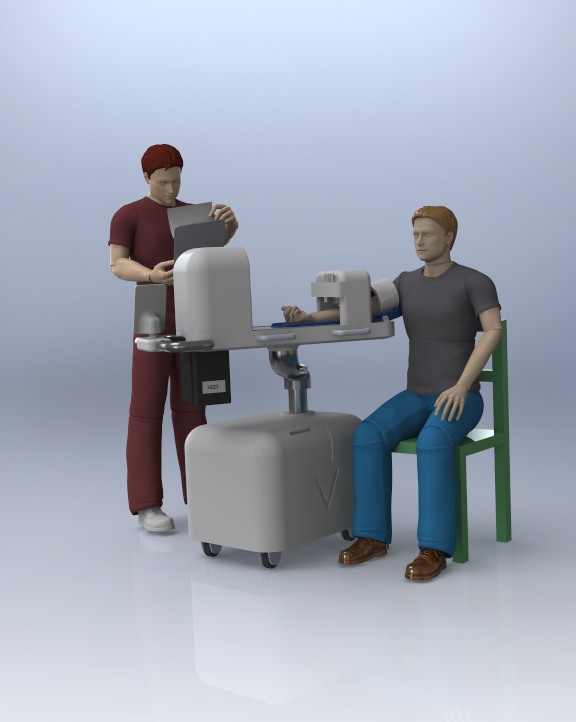Veebot's Robot Technician Draws Blood From Patients, With Higher Accuracy Rate [VIDEO]

"Phlebotomist Prime" might make a good nickname for a new robot designed to draw blood from patients with a higher than human degree of accuracy.
Made by a startup based in Mountain View, Calif., Veebot scans the patient's arm using a visual analysis capability to select the vein. While seated, the patient puts his or her arm through an archway to allow inflatable cuff pumps to restrict blood flow. The robotic medical technician then uses ultrasound and infrared light to search for veins before aligning and inserting a needle.
Veebot designers say the unmanned system takes only a minute or so to process the information, requiring a human technician only to attack the blood test tube and preside over the process, in case the patient loses consciousness.
To date, Veebot boasts an 83-percent accuracy rate in selecting the best vein for insertion, besting the human competition. A phlebotomist typically fails to select the best vein from which to draw blood one in four times, sticking many patients needlessly.
The roboticists say they're working to improve the accuracy rate to 90 percent before beginning clinical trials. Richard Harris, a third-year undergraduate in Princeton University's mechanical engineering program, told reporters he is passionate about improving the sense of vision in robotic systems.
"It had demanding requirements because you'd be fully automating something that is different every time and deals with humans," he said.
Veebot began as a prototype several years ago, which are like "dog years" in the field of mechanical engineering and robotics. Harris now plans to sell the mature product to large medical facilities within a marketplace estimated at $9 million.
The use of robotics in medicine began nearly three decades ago when PUMA 200 was used to place a need for a brain biopsy in 1985, using computed tomography image guidance. Then, developers at Imperial College London produced MROBOT, which assisted in a prostatic surgery at Guy's and St. Thomas' Hospital in London.
But in 2006, a robot performed the world's first unassisted surgery, correcting a heart arythmia on a 34-year-old man with results deemed superior than human. And with a database of 10,000 similar operations, the machine certainly boasted more "experience" than any human surgeon.
Since then, roboticists have achieved a number of firsts, including all-robotic-assisted kidney transplants in 2009 at Saint Barnabas Medical Center in Livingston, N.J., and an operation at the femoral vasculature at the University Medical Centre Ljubljana the following year, which represented the first robotic operation guided not by mirroring of human hand movement but by the pressing of buttons.
Experts say half of medical surgeons may be replaced by robots during the during the next decade or two.



























